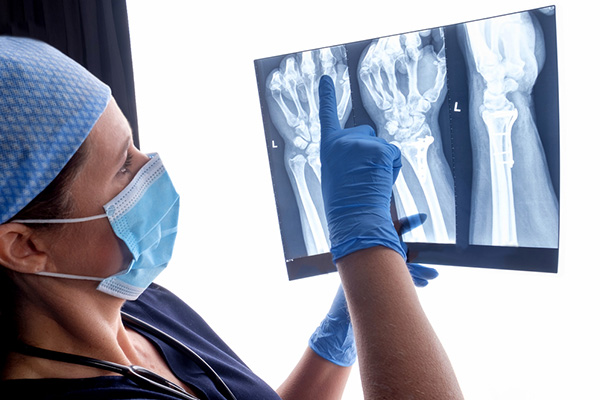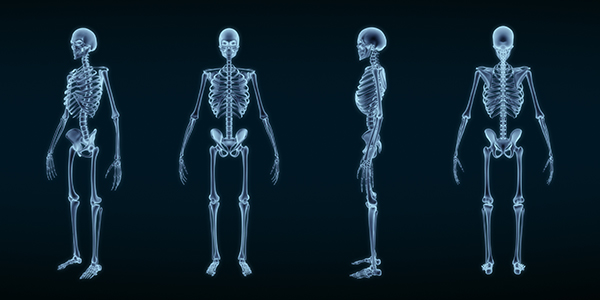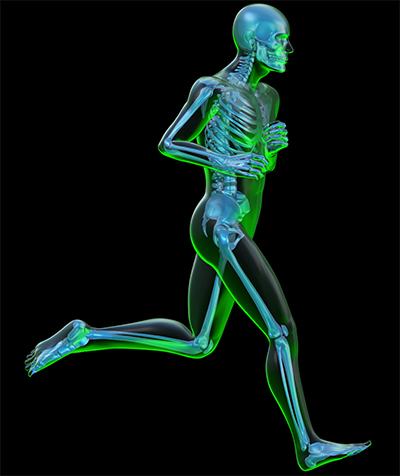Total Orthopaedic Solutions 3 Framework Customer Engagement Guide
Whatever your Orthopaedic, Trauma and Spine needs, our Total Orthopaedic Solutions 3 Framework Agreement is the solution
This guide takes you through the benefits of our approach, includes the structure and process for setting out the options available, and shows how we deliver quality, clinically assured products and value to the NHS.
Our approach delivers benefits to NHS providers by:
- Providing a route to market that is compliant with public procurement regulations, removing the need for local procurement teams to undertake their own tenders.
- Providing access to competitive national pricing which has, to date, delivered more than £150 million in cash releasing savings, operational efficiencies and significant capital investment to the NHS.
- Supporting ambitions to remove unwarranted variation and providing solutions that deliver quality patient outcomes.
- Giving access to world class products and innovation to improve working practices and enhance the patient experience.
- Developing work plans following the production of Spend Efficiency Reports. These review all your budgetary spend, classified via our intuitive catalogues to take your data at product line level and present this back in a meaningful, clinically relevant way.
- Providing a fully supported end-to-end process from our dedicated regional teams comprising of Category Managers (CMs), Clinical Engagement and Implementation Managers (CEIMs) and Procurement Assistants (PA).
- Ensuring clinicians are central to the decision-making process.
- Providing robust analysis of the full attributable spend in NHS trusts and across Integrated Care Systems (ICSs), identifying options for immediate and longer-term market assessment opportunities.
The TOS3 framework agreement covers the following:
- Lot 1 – Implants and Consumables:
- 1.1 Hip Arthroplasty1.2 Knee Arthroplasty1.3 Extremities Arthroplasty1.4 Complex Arthroplasty1.5 Internal and External Fixation1.6 Spine1.7 Arthroscopy and Fluid Management1.8 Bone Preparation1.9 Power Tool Consumables1.10 Regenerative Technology1.11 Orthopaedic Additional Devices
- 1.12 Custom and Customisable Implants*
- *NHS Supply Chain has an agreed process with NHS England for suppliers to quote for custom products and for NHS trusts to place orders via eDirect. This is set to bring significant time and cost efficiencies to treating these most complex of patient needs.

Effective procurement across orthopaedics is fundamental to realising value and facilitating efficiency improvements across the NHS. This broad and complex category requires that we work with orthopaedic departments across the country to achieve the required savings and deliver relevant solutions. Clinical engagement is at the heart of the national strategy. To ensure success, it is crucial that the NHS allows this engagement to take place as early as possible and throughout these processes. By doing so we will improve the working environment for our clinicians and support staff, whilst also improving patient outcomes and experience.
Professor Tim Briggs CBE, National Director for Clinical Improvement NHS England and NHS
Improvement
- Lot 2 – Equipment*:
- Includes but not limited to – Robotics, Navigation, Imaging, Fluid Management, Consoles and Arthroscopic Stack Systems, Power Tools, Helmets (hoods/togas), Tourniquet Machines, Bone Harvesting/ milling, Ultrasound Cement Removal, Cement Mixing, Ultrasound Bone Healing.
- *The consumables for equipment are found within sub lot 1.11.
- Lot 3 – Services and Solutions:
- Includes but not limited to – Wearable Devices, Patient/Surgeon applications, Software Solutions, Virtual Reality (VR) and Augmented Reality (AR) technology, Efficiency Programmes, Patient Planning, Managed Equipment Services, Technical Support.
We can support a complete review of your Orthopaedic spend to move to our framework and transact via the NHS Supply Chain route.
To understand how each department within your trust can benefit from utilising the Total Orthopaedic Solutions 3 (TOS3) Framework we have explained the advantages for each team.
Benefits for Patients
- Patient safety is the most important factor. All products on the national TOS3 framework agreement comply with EU/UK medical device regulatory requirements and are categorised and monitored to ensure they do the job they are intended for.
- Products are catalogued and recorded to identify all product sales, which enables action to be taken quickly if a product is recalled or there is a Field Safety Notice.
- The framework allows innovation to flourish across the market and become available to NHS trusts in a transparent way. Allowing the latest technological developments to be safely deployed into the NHS improves clinical options and ultimately improves outcomes for patients.
- Reviewing NHS expenditure through Spend Efficiency Reports highlights the efficient use of budgetary spend. This, coupled with our continuous supplier commercial development, assures the taxpayer that public money is being spent as effectively as possible without reducing the quality of products or services.
- Market assessment projects to standardise practice, release operational efficiencies within the department to ensure there is a pathway to more reproducible results and allow clinicians to spend more time on patient care.
- A transparent pricing structure, available to all, ensures the NHS benefits as a whole.
- Reducing the number of different prosthesis frees up storage areas for other items. This, in turn, reduces the number of items in corridors and cuts the infection risks to patients associated with that.
- Having fewer products reduces the amount of junior doctor training time needed for each procedure, which in turn frees up more time for both junior doctors and consultants to spend with patients.
- Nursing/agency staff have less risk of making errors if the number of alternatives for the same procedures are minimised.
- Contracts under the TOS3 framework agreement ensure the right service is delivered to the NHS by suppliers under contract – from stock management to clinical support, innovative products to advances in enabling technology, training and education to services to optimise the patient pathway. This means that orthopaedic departments are empowered to operate as effectively and efficiently as possible, using technologically advanced systems which ultimately impact on the full end-to-end patent journey across orthopaedics, trauma and spine surgery. This improves the Patient Related Outcome Measures, lowers unwarranted variation and enhances overall patient experience.
Benefits for Directors of Finance
- Our analysis will allow our regional Category Manager to produce a Spend Efficiency Report (SER) for your trust:
- Highlighting the current spend distribution across all product areas in orthopaedics, trauma and spine.
- Categorising all usage, drawing out expenditure with different suppliers and showing how effective the budget is being used in terms of supplier distribution and product fragmentation (for example, like-for-like products from different suppliers).
- Showing current spend versus framework spend with no change and no commitment, and no change with commitment. This enables a work plan to be developed with your procurement and clinical teams with recommendations to adopt some quick wins whilst also starting clinically engaged market assessment processes, managed by our regional CEIM. All savings are represented at line level. If alternatives are adopted, this can also be represented in product groupings which are relevant to the category. This ensures a realistic forecast of savings from switching to different suppliers’ “like-for-like” products, which can be captured and monitored post award. We can also model based on changes to clinical practice, for example modelling changes in the types of products used for particular demographics or clinical indications, as recommended by the GIRFT (Getting It Right First Time) programme.
- Our services are provided by seven regional teams in England who are all connected to the wider national strategy and in discussions with the market. Being part of this national model means that when we secure a better discount for another NHS trust with similar contracting outcomes as yours, you automatically benefit from the improved pricing.
- All our processes are compliant with procurement law and subsequent commitment contracts are put in place with a cap on prices paid for the duration.
- Benefits from value-based healthcare solutions can also be identified and we have multiple options from across the industry which the NHS can take advantage from.
Benefits for Procurement Teams
- We have dedicated regional teams covering each of the seven NHS England regions. We work closely with each trust to provide support throughout the process with dedicated Category Managers (CMs), Clinical Engagement and Implementation Managers (CEIMs) and Procurement Assistants (PAs).
- The CM will work with you to ensure the trust objectives are clearly identified early in the process and the CEIM will engage with you and your clinicians, drive market assessment projects, and help with product selections.
- Together our team will work with local trusts to obtain accurate data and review your complete budgetary spend through a Spend Efficiency Report (SER) which gives key findings and recommendations across your various spend areas and classifies your data to enable a more informed clinical discussion.
- This will identify any quick wins available to you by providing your consent to migrate to the Total Orthopaedic Solutions 3 framework agreement, with or without commitment. We can also carry out a full market assessment of specific product areas (for example, hips, knees, trauma or spine) should you wish us to do so.
- Our project charter ensures the correct process is adhered to and offers procurement teams a useful tool which captures all aspects of the project.
- NHS trusts can only award under the framework (with or without commitment) through a TOS3 Access Agreement and subsequent Call Off Contracts with the suppliers. This is facilitated by our contracting team and uses the DocuSign electronic signature system to make the process easy and quicker.
- Through this one framework agreement you can address and adopt contractually compliant and clinically appropriate solutions across all sub-specialty areas in Orthopaedics, Trauma and Spine.
- Projects and contracting can be facilitated at individual trust, multi-trust or Integrated Care System (ICS) level enabling you to identify the right solution for your clinical teams.
- Additional products and value-based solutions are also available which look to help streamline the pre, peri and post-operative delivery of care to patients. This includes patient pathway planning, software solutions, apps/wearables for patient monitoring and remote care, capital equipment and enabling technology (for example robotics, imaging and navigation, implant/procedure planning).
- The TOS3 national pricing matrix delivers transparency and benefits the whole NHS by ensuring prices secured for any given level of business are available to other NHS trusts with similar activity.
Benefits for Clinicians
- Our first obligation is to ensure clinicians needs are met and that they are enabled to make informed decisions.
- Early consultant engagement is paramount to the success in implementing commitment-based contracts with suppliers, through NHS Supply Chain. Appropriate stakeholders need to be involved from the beginning of the engagement process due to the nature of the products in scope and the complexities around the commercial and service elements of the specialties. In our regionally dedicated Clinical Engagement and Implementation Managers (CEIMs), we have a team of experienced professionals with orthopaedic clinical, industry, product and commercial expertise who can converse with all stakeholders.
- These crucial early meetings with clinical leads cover the changing landscape and recent or planned changes in their practice, their collective ambitions for the service they provide, our end-to-end processes for complex projects and the overall national strategy. The assigned CEIM will then maintain direct and regular contact with the clinical lead(s) or appointed sub-specialty clinical lead(s) to fine tune the options.
- The commercial structure of the TOS3 framework agreement is relevant to clinical practice. Through our in-depth and robust processes, we have delivered successful outcomes for many years which are centred around the needs of clinical departments.
- Our approach includes a focused consultancy which considers numerous variables depending on the current position of the trust. The translation of department specific activity into a usable format takes considerable expertise from our CEIMs who use this to build a picture of the activity and clinical approach within a trust. As such, building in the right information is key to yielding a relevant output and delivering a timely project with an optimum contract which is compliant, implementable, adheres to the contract terms and meets the needs of clinicians, the directorate, theatres, procurement, finance and sterile services.
- It delivers safe, clinically assessed products that do the job you need them to.
- All products meet required EU/UK certification for use and are clinically assured.
- Suppliers on the framework can take part in hands-on supplier days, workshops and/or clinical trials which enable clinical teams to review and assess products from across their portfolios.
- By working with your in-house procurement team from the outset, the framework process allows you to ensure that the products chosen will deliver what you want and need clinically.
- The process looks at all historic product purchases over a 12-month period to secure a compliant contract with your suppliers, either with or without commitment (whilst options are determined). Importantly, it will also reflect your department’s aspirations of expected clinical activity over the coming years. We can look back in terms of activity, but you may have ambitions to make changes which are reflected in what products you look to contract for, over the coming years.
- This will deliver better prices, while ensuring the clinical team is at the heart of the decision-making process and that the subsequent contracts represent their product and service needs.
- As we move into ICS landscapes – and with potential movement in the future locations of surgery in Orthopaedics, Trauma and Spine – this means we can plan for that with a solution which meets the needs of the surgical teams and patients in that region.
- These solutions can incorporate a review of brands used in each procedure, with an established and refreshed consignment which meets your collective needs. Stock and clinical support expectations can be included in a detailed Service Level Agreement between you and your contracted supplier. As well as traditional services we can look to establish under contract, comprehensive training and education plans, innovative technology used in patient care, and access to efficiency programmes which may benefit the patient journey and experience. There are a multitude of value adding solutions which your CEIM can discuss with you and invite relevant stakeholders from industry to discuss further, should you wish.
- Contracts which are put in place can help towards realising the future aspirations of your service and improve the productivity and working environment for you and your wider theatre teams.
Clinical engagement in procurement is key to success
Whatever your role or your requirements are, we will talk you through the different options and guide you through them, allowing your trust to make an informed choice on next steps and how to access the opportunities available through the framework.
The National Spinal Services GIRFT report demonstrated wide variation in implant prices across England. This is in part due to a lack of transparency around pricing. The use of the GIRFT spinal categorisation which places spinal implants into categories with the same evidenced base outcome, will allow trusts to gain best value for the NHS. NHS Supply Chain’s processes centre around effective clinical engagement and it is imperative in spinal surgery, that the decisions regarding procurement have clinical input.
Mr. Mike Hutton, National Clinical GIRFT Lead, Spinal Surgery.
We offer a comprehensive service which uses the framework as the vehicle to establish the right pricing and set up compliant contracts.
Across Lot 1 – Implants and Consumables – all sub-lots within TOS3 have a National Pricing Matrix made up of multiple bands which are appropriate for each sub-specialty in terms of individual band width and the total number of bands. For example, hip replacements are roughly in volumes of 50 procedures per band and extend out for a large number of hips being conducted across an ICS.
The level of spend with a supplier in terms of volumes or value within a sub-lot, points to the relevant band and subsequent pricing. These form the Core Bands. Supplementary discounts are then applicable based on commitments to term and market share and there is a defined set of parameters in which suppliers have been able to submit any other discounts.
With Lot 2 – Equipment and Lot 3 – Services and Solutions there are a plethora of additional solutions which your regional Category Manager (CM) and Clinical Engagement and Implementation Manager (CEIM) can discuss in more detail with you, when engaged in a project.
In terms of equipment, deals can usually be independent agreements or linked to implants / consumables, if relevant. Options for equipment include:
- Outright capital equipment purchase
- Lease purchase agreements
- Amortisation with consumables
- Equipment placement
- Managed equipment services
- Rentals.

See our Downloads section for:
- TOS3 – Awarded supplier by lot matrix
- Our regional team contact details for TOS3
- Orthopaedic data process flow and workplan development
- Indicative timescales for the engagement process
- 12 Stages of Clinical Engagement in Product Rationalisation
See our Useful Links section for further information on Orthopaedics, Trauma and Spine, and Ophthalmology. The team includes highly skilled and knowledgeable colleagues with first-hand experience of orthopaedics and patient care, as well as commercial and product specialists from the orthopaedics industry, who have experience of working in theatres with clinical leads up and down the country.
What You Can Expect From Us
Our Regional Category Managers (CM) and Clinical Engagement and Implementation Managers (CEIM) are specialists in this field and can give guidance and support to evaluate your complete budgetary spend and identify savings opportunities through compliant processes and with the needs of your clinicians in mind. They will work with you to ensure trust objectives are clearly identified early in the process.
Your dedicated regional team will work with your clinical, procurement and directorate leads to review opportunities available to your trust by using the framework.
Quick wins are identified by completing a full review of a trust’s orthopaedic spend and then producing a Spend Efficiency Report (SER) which organises all your data into relevant sections and gives insight across the whole budget in terms of sales and products used.
Options available will include supporting your trust to complete a full orthopaedic spend review and identify ‘quick wins’ or ‘as is’ savings options.
The outcome and analysis will focus on supplier product fragmentation which gives clarity on exactly what types of products are being bought from which suppliers. It will also identify opportunities where your trust can save money by doing nothing other than providing your consent to migrate to Total Orthopaedic Solutions 3 pricing; and finally will make recommendations for areas of spend which can be:
- simply migrated
- migrated with commitment to term or
- included in a detailed and full clinically engaged market assessment project.
These projects are managed by our CEIM team and allow trust procurement and clinical teams to assess the market and model appropriate options, with a focus on product detail, historic activity and projected clinical practice.

Our CEIMs conduct appropriate market assessment projects which are designed specifically for all sub-specialties, covered in the TOS3 framework agreement.
This initial SER meeting is facilitated through a detailed discussion with your regional CM and CEIM who have worked closely with numerous NHS trusts on these processes and are well versed in the national strategy and discussion across all regions.
Should a trust wish to access any element of the framework agreement following an SER meeting or after a detailed market assessment project, a Total Orthopaedic Solutions 3 Access Agreement will need to be signed and returned by the authorised procurement lead.
Should commitment to term also be required, then a clinical signatory will also be required.
A call off contract will then be drawn up by your regional procurement assistant, which will form the basis of your contract with the supplier(s). This form will enable our orthopaedic team to notify suppliers of the appropriate price band to be activated to ensure the correct catalogue pricing is available to your trust, enabling orders to be placed.
The framework can be accessed with no commitment, or commitments for two, three or four years at any point during the lifetime of the agreement. Commitment to five years is also possible when contracts are linked to capital equipment.
While agreements are fixed for the duration of that commitment any improvements a supplier makes to their offer on the framework will be also be offered to trusts already signed up.
Suppliers may also have innovations which could be available to you. These can simply be commercial, in terms of discounts being applied or lend themselves to a more partnered agreement, by offering to work with your clinical departments to improve ways of working eg theatre optimisation, patient pathway or other operational efficiencies, enabling technology such as patient apps and wearables, navigation, imaging and robotics.
What We Need From You
We can only progress your request once we have:
- Early engagement between you, your clinical teams and our regional teams to consider what services are needed.
- A completed Letter of Authority to obtain your data directly from your suppliers. This should include all suppliers, in scope, which your trust has bought any products from in the given timeframe.
- Your relevant regional Category Manager will ensure all the relevant data is acquired for 12 months sales at your trust.
- We will need to understand which of your suppliers and products are under contract, any interdependencies across product areas and contract end dates, and if there are any other commercial arrangements in place, such as rebates and investments in equipment.
- We will work with you to fulfil your requirements, whether that is to maintain existing supply options or make wholescale changes, including implementation of efficiency programmes.
- Should your contracts already be captured under a Total Orthopaedic Solutions call off contract, our regional teams will be able to help you map this out early on.
We will look at two main options when reviewing orthopaedics:
- We will present data on an “as is” basis for your trust to switch to the framework agreement on a no commitment basis. Once data is received, and all information is correct this will take approximately three weeks to run through our data team and for the SER to be developed by your regional Category Manager. The same document will also present options for commitment to the status quo in each of the areas of spend / particular suppliers. For implementation and code loading this will take approximately six weeks in line with internal policies and procedures that must be followed.
- Alongside doing the “as is” benchmarking process, and within the SER, we will also run a Supplier Distribution Report for all the data, which represents those sales in terms of market share distribution across the different suppliers, for each of the product sub-categories. This shows where similar products are being used in a department and the split between each supplier.
The team will talk you through all the different options and guide you through the next steps allowing your trust to make an informed choice on how to access the opportunities available.
See our Useful Links section for further information on Orthopaedics, Trauma and Spine, and Ophthalmology. The team includes highly skilled and knowledgeable colleagues with first-hand experience of orthopaedics and patient care, as well as commercial and product specialists from the orthopaedics industry, who have experience of working in theatres with clinical leads up and down the country.
